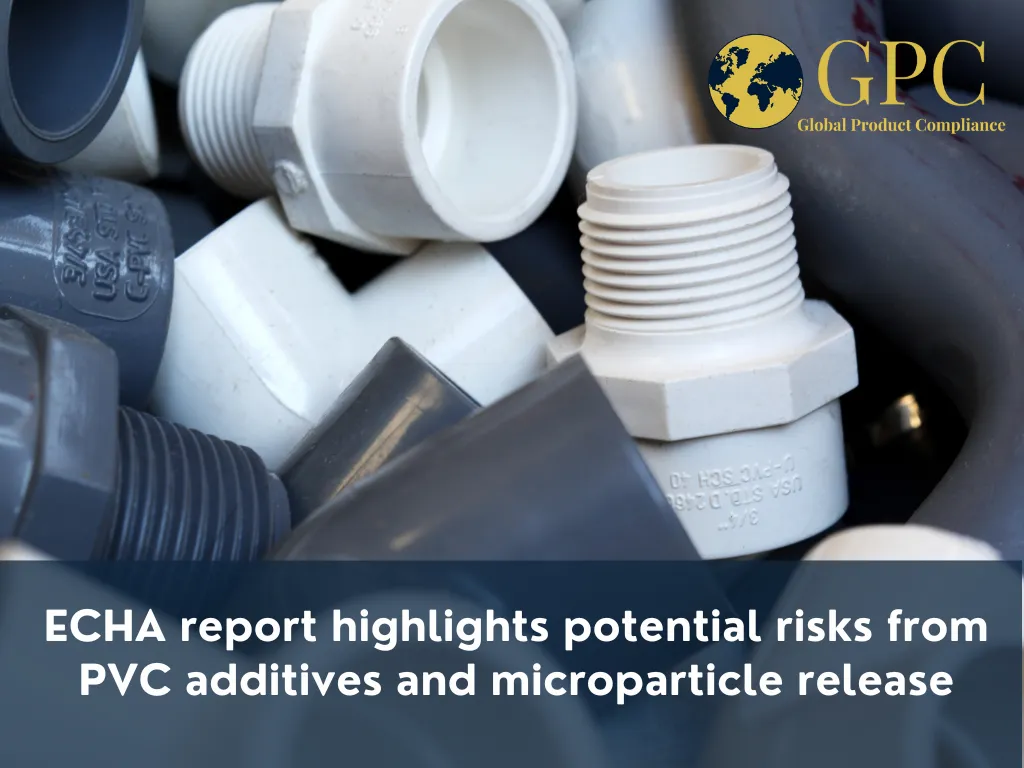News Details

ECHA report highlights potential risks from PVC additives and microparticle release
On 22 November 2023, the European Chemicals Agency (ECHA) published an investigation report on PVC and PVC additives. The investigation was carried out by ECHA at the request of the European Commission to help the Commission determine how to control potential risks from PVC additives and PVC. The investigation found that some substances such as plasticisers, that are added to polyvinyl chloride (PVC) plastic, can potentially pose risks to human health and the environment. It also concluded that regulatory action is needed to limit the use of such additives and to minimise the release of PVC microparticles.
PVC additives
The polymer PVC needs to be combined with specific additives before it can be converted into products. The additives play an important role in determining the flexibility, stability, colour, clarity, and electrical properties of PVC products.
Some additives used in PVC such as stabilisers containing cadmium- and lead and certain phthalates have been found to pose an unacceptable risk to human health and the environment. As a result, these additives are now restricted under REACH. In addition, studies are underway to assess the risks associated with other additives such as medium-chain chlorinated paraffins and flame retardants.
Conclusions
The study focused on 63 PVC additives selected from an initial list of 470 substances. The 63 substances are plasticisers, heat stabilisers and flame retardants (the full lists can be found here). The main findings of the report suggest that regulatory action is needed in the following areas:
-
To minimise risks from plasticisers, in particular ortho-phthalates which have already been confirmed to be reprotoxic or endocrine disruptors. Suitable regulatory action is REACH restriction.
-
To reduce risks from organo-tin substances (such as DOTE) used as heat stabilisers, which can cause developmental malformations and reproductive problems. Suitable regulatory action is REACH restriction in combination with other measures.
-
To ensure that releases of PVC microparticles and prioritised PVC additives are minimised. Technologies to minimise emissions of PVC microparticles at recycling facilities and landfills must be implemented and improved. The microparticles contain the harmful additives so minimising the emissions would consequently reduce emissions of the additives.
-
To reduce emissions of flame retardants, which contribute significantly to the emission of the prioritised additives, as proposed in ECHA’s strategy on flame retardants.
The risks posed by PVC resin to workers and the environment are considered to be adequately controlled by the current operating conditions and safety measures implemented by companies. This conclusion follows an analysis of the materials used to produce of PVC resin, the production process itself, waste management practises, and exposure to PVC dust.
The full text of the report can be accessed here.
Next steps
ECHA’s investigation report has now been sent to the European Commission. The Commission will evaluate the report and decide whether there is a need to formally request ECHA to prepare a proposal for a restriction under REACH.
We acknowledge that the above information has been compiled from ECHA.


